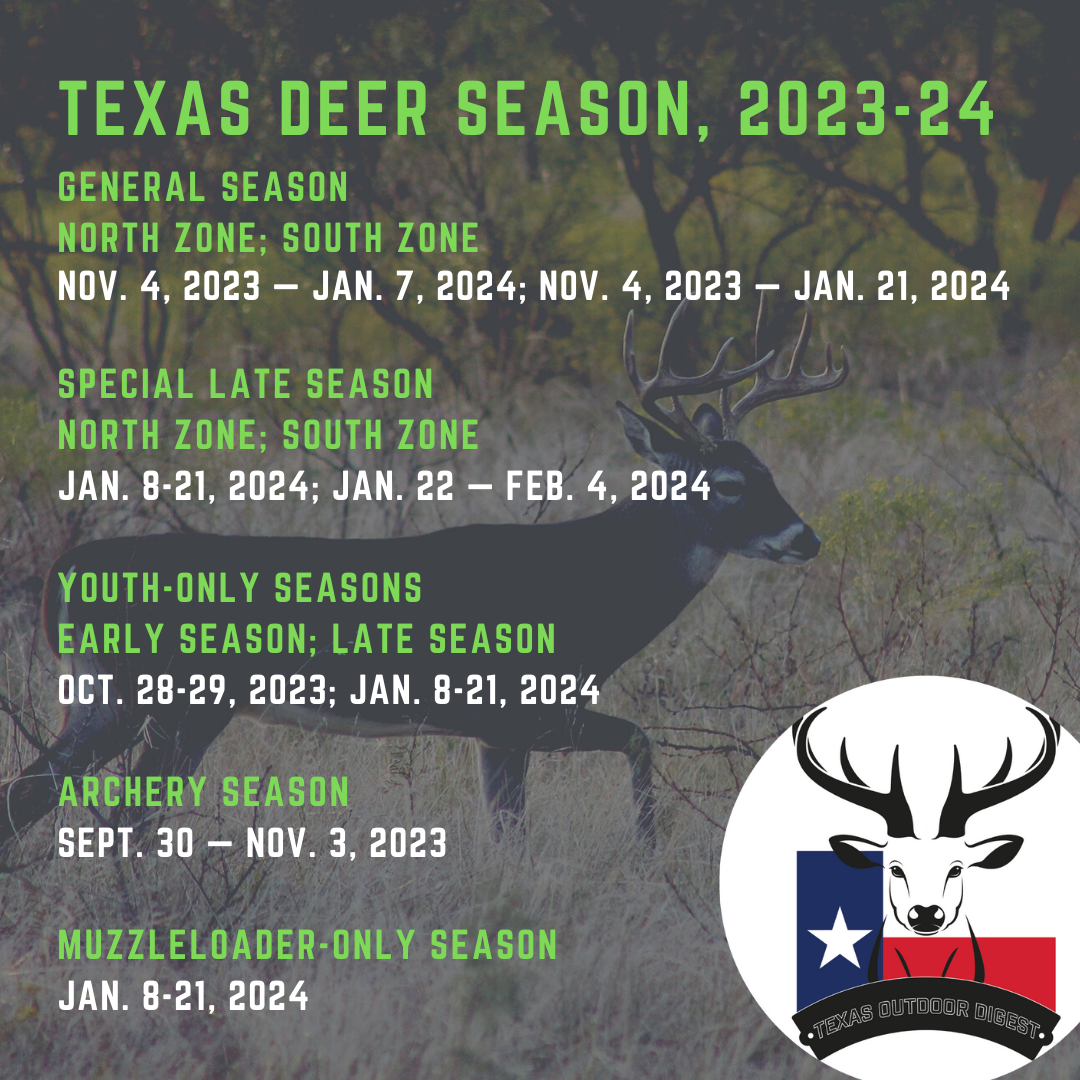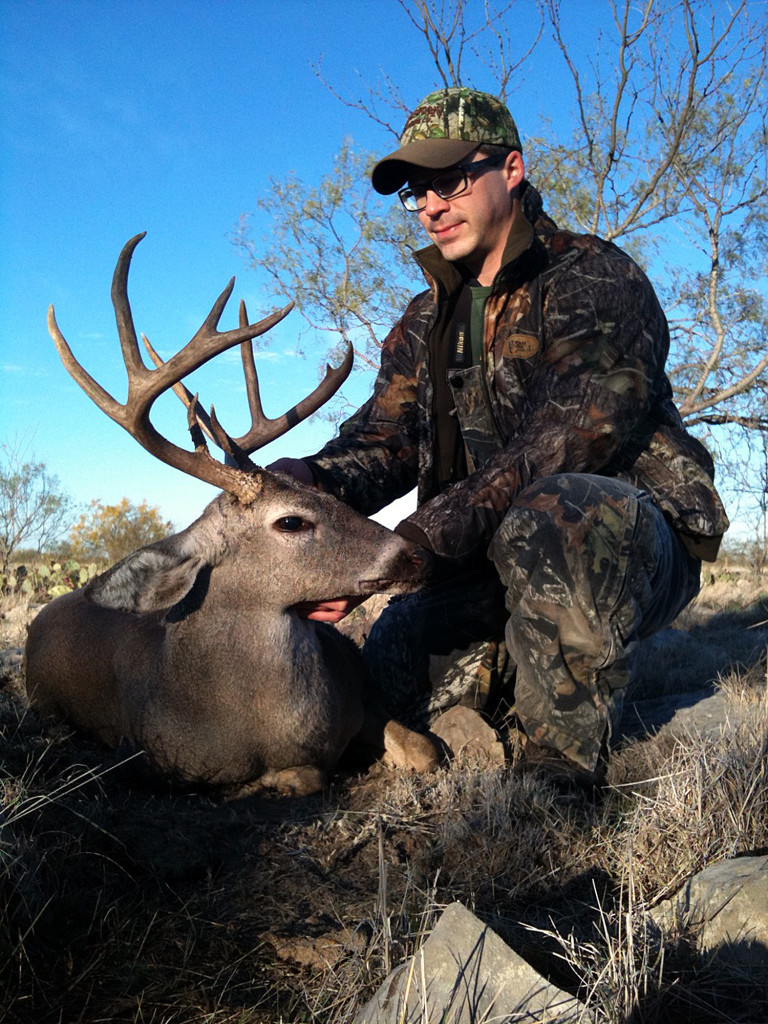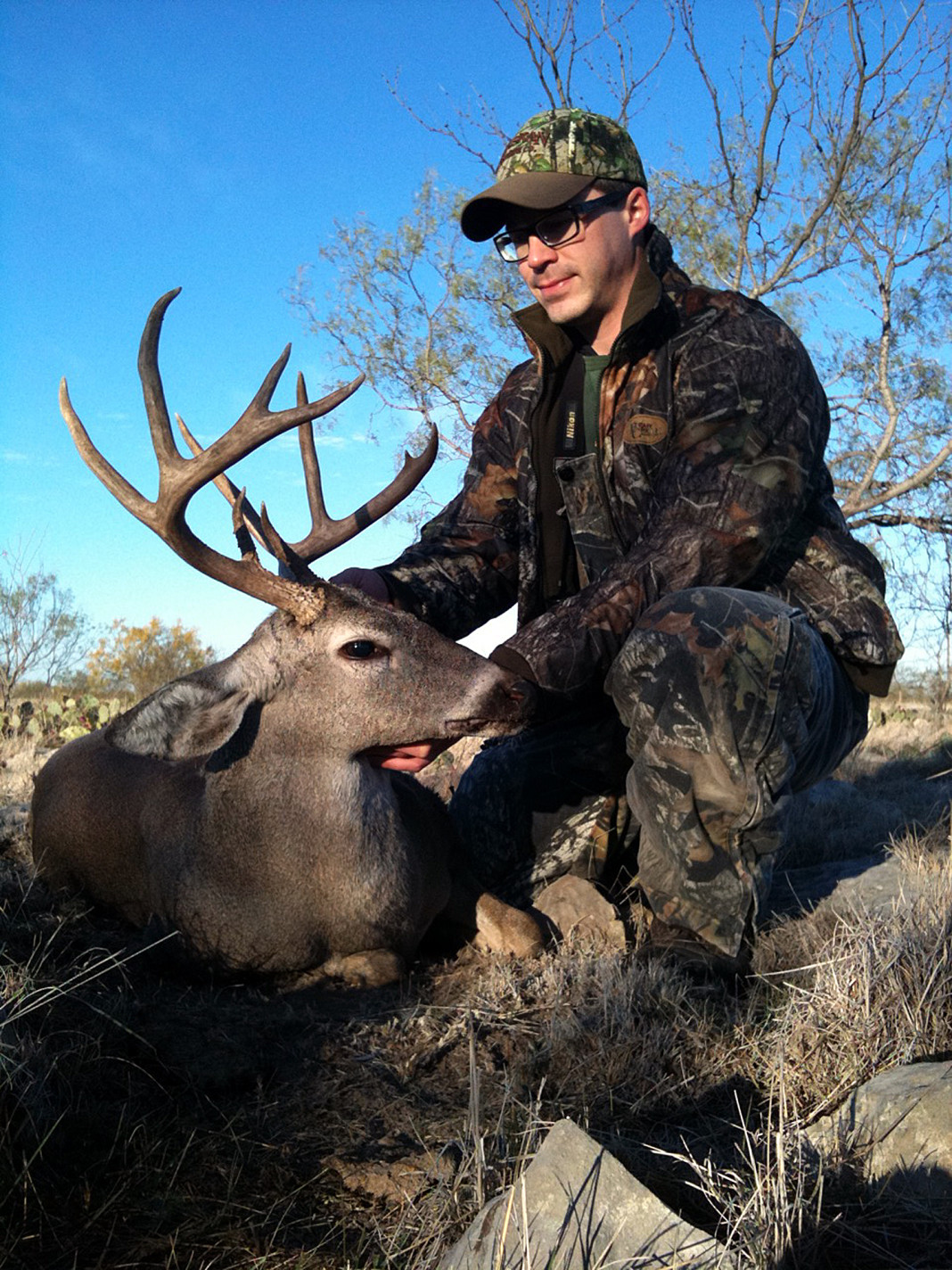
The iron sights glow faintly on a frosty afternoon sit.
Rays from the setting run dance along the barrel as the old whitetail doe feeds closer.
The shot lines up perfectly.
The West Texas breeze rises slightly as the deer steps broadside at 60 yards. An instant later the trigger eases the percussion cap into its deadly sequence, igniting the powder in the muzzleloader and sending the slug spinning from the barrel amid a plume of smoke.
The aim feels true behind the shoulder, but rather than felling the creature in its tracks, the doe runs through oaks atop a slight rise in the terrain and out of sight.
Even the most frigid conditions pale in comparison to the icy chill that accompanies the thought of losing any type of game.
After exiting the stand and heading to the exact spot where the deer stood, the search began for any sign of a hit. However, after closer inspection of every blade of grass and low-lying tree branch in the surrounding area, no indications were merited that the animal indeed had been hit by the slug. There were no tell-tale signs of blood, hair or any other gauge that my aim indeed had been dead on.
After about two hours of searching, including with the aid of flashlight after sunset, the investigation was shelved until the morning. The night was filled with little sleep and thoughts of the exact moment of impact, including replaying the deer’s final moments in sight. It had slightly hunched up, giving the suggestion of a hit, but didn’t react otherwise harmed in sprinting away.
The pursuit resumed early the next morning, and within an hour, the deer was found — only a couple of hundred yards from where the search began. The freezing temperatures had kept the meat from spoiling, but upon examination, the reason it had been so hard to track emerged: There was no exit wound. The slug had simply shredded without punching through, producing no visible signs of the deer being wounded.
While this is a rare tale, it does occur each fall and winter, and it’s up to us as responsible hunters to always never let anything go to waste — especially our efforts at ultimately tracking an animal to its final resting place. Life and death is no game. As hunters we owe it to deer and other critters to dispatch them expeditiously and humanely. We also need to respect that life that is taken by making the most of what remains.

Tracking remains at the heart of hunting, though it’s often an overlooked skill. Most hunters spend plenty of time sighting in their rifle and ensuring that they have all the necessary gear, but it’s also vital to know what to look for in the event of an animal not dropping instantly after the trigger is pulled or arrow is released.
The first key component of tracking is to always follow the path the game has traveled, including marking where it has gone out of sight. It’s also advised to be observant of other sights and sounds, especially how the animal initially reacts. I’ve seen huge game drop while smaller animals seemed to absorb a round from a caliber that’s seemingly much too large and hardly flinch before sprinting off.
It’s also good practice to listen closely for any signs of an animal crashing through brush or other indications that would highlight being wounded and not otherwise normal. Once you’ve pulled the trigger, you also should wait for a period of time, even if you see the animal drop. You also should stop to listen while trailing to hear any possible signs that the animal could be nearby.
While blood, tracks and other signs may be easily visible, it’s best to also look for the smallest details, including limbs or vegetation that may have been displaced, which could disclose the direction of travel. While toilet paper has long been a necessity for other reasons, it also can serve as a path indicator. It and colored tape can be used to mark sites with drops of blood or other evidence, further narrowing down a course an animal may take.
It also should be noted to not disturb any sign of downed game such as blood by stepping on it or altering its look, which can further add to disappointment.
Should a blood trail end, stop and look for the downed game itself before returning to the last sign of its flight. It certainly can be easy to lose a blood trail amid bright vegetation in some locales, but I’ve also encountered trouble on drab terrain that would make most hunters imagine signs being simple to detect. This is where being deliberate and thorough makes a true difference.
Even when you are successful in locating a critter, the work isn’t truly done. Never approach downed game from the front, especially with antlered deer and tusked hogs that can do a lot of damage should they be worked into a frenzy. Slowly come up from behind the animal and make sure it has expired, especially being cautious about whether it is still breathing. One proven technique is to poke the animal with the barrel of your gun, including on an eye, and if there’s no reaction, it has died.
It’s up to every hunter to ensure that they’re prepared to take a life, but it’s also important to know what to do when things don’t go perfectly with shot placement. And, as with my case when I was a youngster, even when you thought you made an exact shot, it’s better to go about tracking like you didn’t.
2023-24 Texas Deer Seasons
General Season
North Zone; South Zone
Nov. 4, 2023 — Jan. 7, 2024; Nov. 4, 2023 — Jan. 21, 2024
Special Late Season
North Zone; South Zone
Jan. 8-21, 2024; Jan. 22 — Feb. 4, 2024
Youth-Only Seasons
Early Season; Late Season
Oct. 28-29, 2023; Jan. 8-21, 2024
Archery Season
Sept. 30 — Nov. 3, 2023
Muzzleloader-Only Season
Jan. 8-21, 2024
Texas deer hunting enjoyment not just about pulling the trigger




















